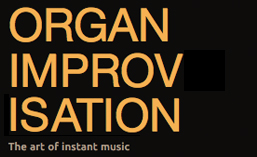“There is no such thing as an empty space or an empty time. There is always something to see, something to hear. In fact, try as we may to make a silence, we cannot.”
― John Cage
“The music is not in the notes, but in the silence between.”
– Wolfgang Amadeus Mozart
As improvisers, we most often are concerned with creating sounds to fill a certain amount of time (just as I did with a passacaglia during communion in Aix). We endeavor to create something coherent and colorful enough to be interesting to us and the listener. Often, this will mean playing a barrage of notes that might fill the time, but do they make music?
Interest
Music flows through constant shifts in tension and release. If there is too much consonance, then there is nothing to propel the piece forward. Too much dissonance simply becomes a different level of musical saturation. Why are people who have trouble sleeping encouraged to use a white noise generator in order to sleep? Because the higher level of background noise allows other sounds to fade into the cloud of white noise where they will not disturb the person’s sleep! Why do most people find twelve-tone music uninteresting? The equal treatment of the pitches turns them into “white noise” with no cycle of tension and release to hold the listener’s attention.
Silence can be scary
While I was out running with my marathon training group this week, the conversation turned to horror films. Good film music reinforces the moods and emotions of the scenes. We know something bad is about to happen when the music shifts into some dark, minor key and slows down. The person I was speaking with also pointed out how she becomes afraid when the music stops. The silence can actually build the tension by leaving the viewer (listener) hanging, waiting for whatever will happen next. When the music stops, it’s a cue for the listener to become afraid.
As improvisers, creating the music, I think often times we are afraid of the silence. Perhaps we’ve been trained by too many horror movies that something bad will happen after the silence, but I believe silence is a tool that we need to learn to master just as we master harmony and counterpoint. Silence can be restful, providing relaxation from the tension that came before, or it can be suspenseful, creating a rise in expectations of what is to come.
Simplicity
If complete silence seems a little too scary for you, I encourage you to thin out the texture. Charles Tournemire writes numerous passages in L’Orgue Mystique where only a single melody line is playing. He even ends movements this way!

(The end of II. Offertoire, In Assumptione B.V.M., L’Orgue Mystique, n. 35)
Just because we have two hands and two feet does not mean that we need to play notes constantly with all of them. Why not let each rest in turn? How little accompaniment can you be comfortable playing and will your structure support? Rather than just letting your foot rest on a pedal point, what if you added some rests and so instead of playing a series of tied whole notes, simply played a quarter note on the down beat of every bar?

If an accompanying chord sustains for multiple beats, do you really need to simply hold it for full value? What if you treated it like the pedal point above and only played it on certain beats (2 and 4)? I wouldn’t want to turn your improvisation into the Sortie in Eb of Lefebure-Wely, but hopefully you understand how silence can help create interest and keep a piece moving. If you have the score (available for download here), I encourage you to go play the Lefebure-Wely and fill in as many of the rests as you can by sustaining chords or pedal notes for longer values. I don’t think the result will have the same effect….
Artistic
A painter paints pictures on canvas. But musicians paint their pictures on silence.
―Leopold StokowskiMusic expresses that which cannot be said and on which it is impossible to be silent.
―Victor Hugo
Sometimes in our haste to create music and fill the space with sound, I believe we forget that silence is our canvas. John Cage points out how silence is filled with something to hear regardless of what we do. Victor Hugo tells us that music expresses that on which it is impossible to be silent. So the next time that you improvise, I encourage you to let the silence speak. Do you have something more important to say that what the silence can communicate?
Hoping you enjoy the silences of life and music!
Glenn
Recent additions to organimprovisation.com:
Organists:
Form:
Themes
Newsletter Issue 17 – 2014 08 25
See the complete list of past newsletter issues here.
Sign up to receive future issues using the box to the right on this page.
